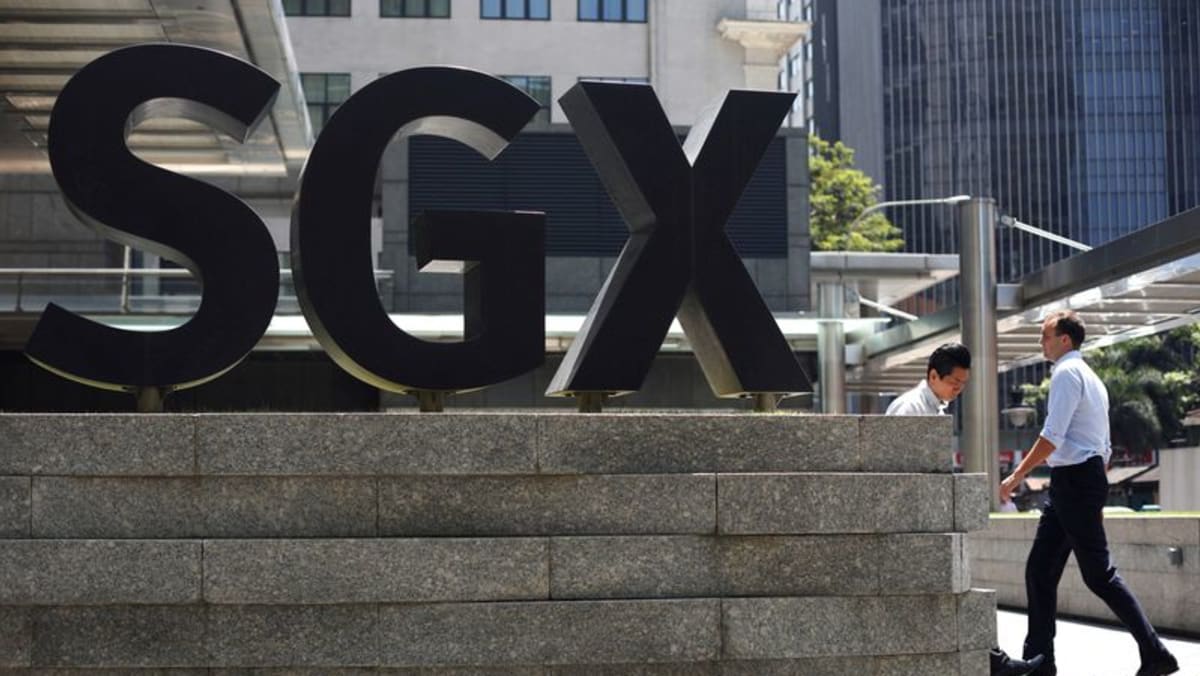MAS managing director Chia Der Jiun said the programme aims to inject liquidity into the stock market, and beyond companies that are on benchmark indexes.
Second Minister for Finance Chee Hong Tat said the authorities are open to investing through both new and existing funds.
The goal is to grow the fund management industry in Singapore with a focus on local equities, to increase interest in trading, he said.
The review group’s first set of measures seeks to increase investor interest, improve the attractiveness of the Singapore Exchange (SGX) to quality companies, and suggest adjustments to the regulatory stance to strengthen investors’ confidence.
“We are not looking for just one silver bullet, because there isn’t one,” said Mr Chee.
Instead, Singapore wants to address different aspects of the market to draw in listings and investor interest.
One group that Singapore wants to attract is companies with a strong local or regional presence.
“We know that it will be difficult for us to be able to attract companies that operate on the global scale … the very large caps, because they would more likely be able to get a better outcome for themselves if they go to the US,” said Mr Chee.
Smaller companies, however, may not enjoy sustained investor interest if listed on a global exchange because they will be like small fish in a big pond.
“If they come to Singapore to list here, then they will be much bigger fish, albeit in a smaller pond,” he said.
Singapore can work with partners to strengthen its competitiveness and make it as attractive as possible, said Mr Chee.
To boost capital inflows into Singapore-listed equities, the criteria for applicants to the Global Investor Programme will be tweaked.
Previously, applicants investing under the family office option had to invest at least S$50 million into four qualifying investment categories.
That will be narrowed so that applicants must deploy the same amount to equities listed on approved Singapore exchanges.
TAX INCENTIVES
During Mr Wong’s Budget 2025 speech on Tuesday, he said he would introduce tax incentives for Singapore-based companies and fund managers that choose to list in Singapore.
He also said he would introduce a tax incentive for fund managers who invest substantially in Singapore-listed equities, in order to encourage more investment in local capital markets.
MAS said Singapore-based companies and registered business trusts planning for a primary listing in Singapore can apply for a 20 per cent corporate income tax rebate.
Those seeking secondary listings with share issuance can apply for a 10 per cent rebate.
The benefit will be capped at S$6 million per year of assessment for companies with a market capitalisation of at least S$1 billion, and S$3 million per year of assessment for companies with a market cap of less than S$1 billion.
The companies must remain listed on the SGX for five years and commit to incremental local business spending or fixed asset investments, and incremental skilled employment.
Companies can apply for this scheme until the end of 2027.
There will also be an enhanced concessionary tax rate for new fund manager listings in Singapore.
Fund managers will pay 5 per cent on qualifying income if it has a primary listing in Singapore for five years and distributes a portion of its profits as dividends. The scheme runs until the end of 2028.
Lastly, fund managers that invest substantially in Singapore can benefit from tax exemptions.
New funds have to invest at least 30 per cent of assets under management in Singapore-listed equities, while existing funds have to meet that requirement as well as have an annual net inflow equivalent to at least 5 per cent of the fund’s AUM in the previous year.
The exemptions will last for five years per fund, and can be applied for until the end of 2028.
DEVELOPING INVESTOR BASE, TWEAKING REGULATIONS
Other measures include an expansion of MAS’ research development grant scheme and sharpening the focus on small and mid-cap companies.
The research could be disseminated in new ways, including on new media channels, with the aim of building an investor base.
Regulations may also be adjusted after consultations, to be more focused and to reduce friction.
Mr Chee said certain listing processes and requirements are too prescriptive and onerous, and layers of rules added in the past may not provide better protection to investors.
One suggestion is to simplify the process for listing such that companies only need to get clearance from Singapore Exchange Regulation (SGX RegCo), instead of both RegCo and MAS.
The scope of merit-based judgment when admitting new listings can be reduced as well, while prospectus requirements and listing processes can be streamlined.
For companies that are already listed on the SGX, some adjustments may also be made.
SGX RegCo will hold a consultation on removing the financial “Watch-List” and shifting away from regulatory surveillance.
Trade With Caution alerts will also automatically expire after two weeks. “This minimises unintended knock-on negative effects of such alerts,” said MAS.
The review group is studying other proposals including attracting retail liquidity through market structure changes and strengthening investor protection.
Temasek Holdings CEO Dilhan Pillay said the measures and proposals are the most significant changes to the Singapore securities markets since the late 1990s to early 2000s.
He said the changes would need to be phased in to balance a forward-looking approach with investor protection.
Mr Shane Chesson, founding partner at Openspace Ventures and vice chairman of the Singapore Venture Capital and Private Equity Association (SVCA), said the measures could start to change perceptions and give SGX the opportunity to attract good companies.
He said some SVCA members are ready to go public, but not in the US market.
“I think SGX is a great destination for them,” he said.
If they are interested, there could be a cohort of firms that seek listings in Singapore, he added.
“Over time, it could build into dozens and dozens of companies.”

